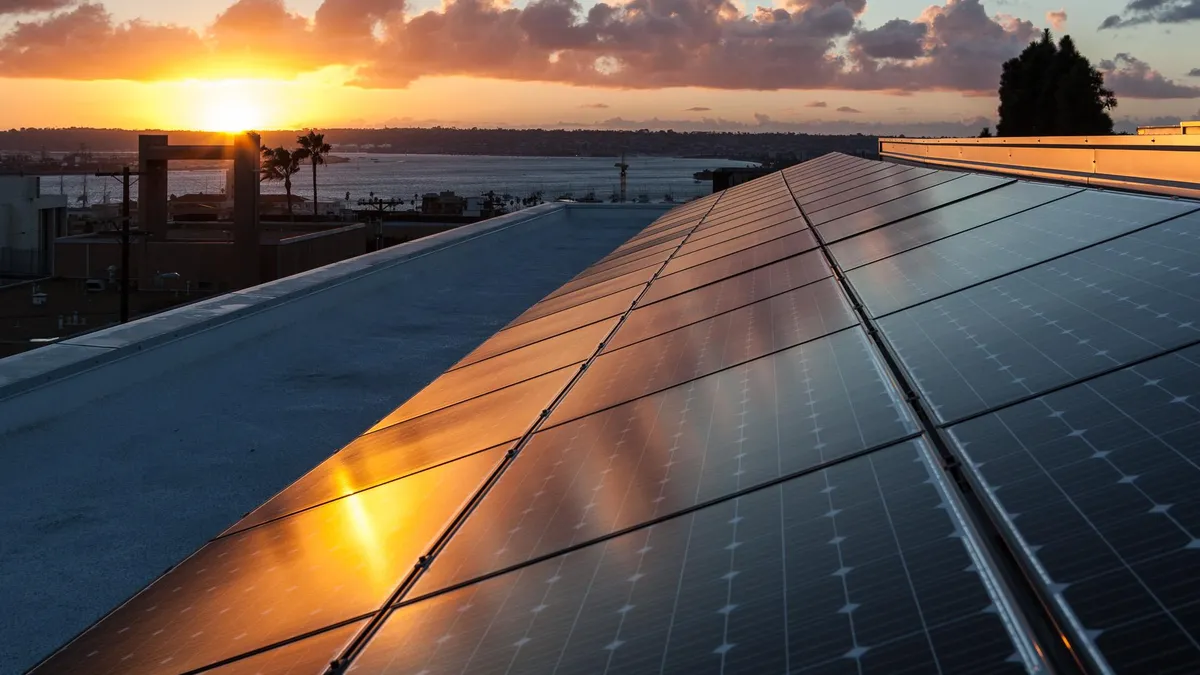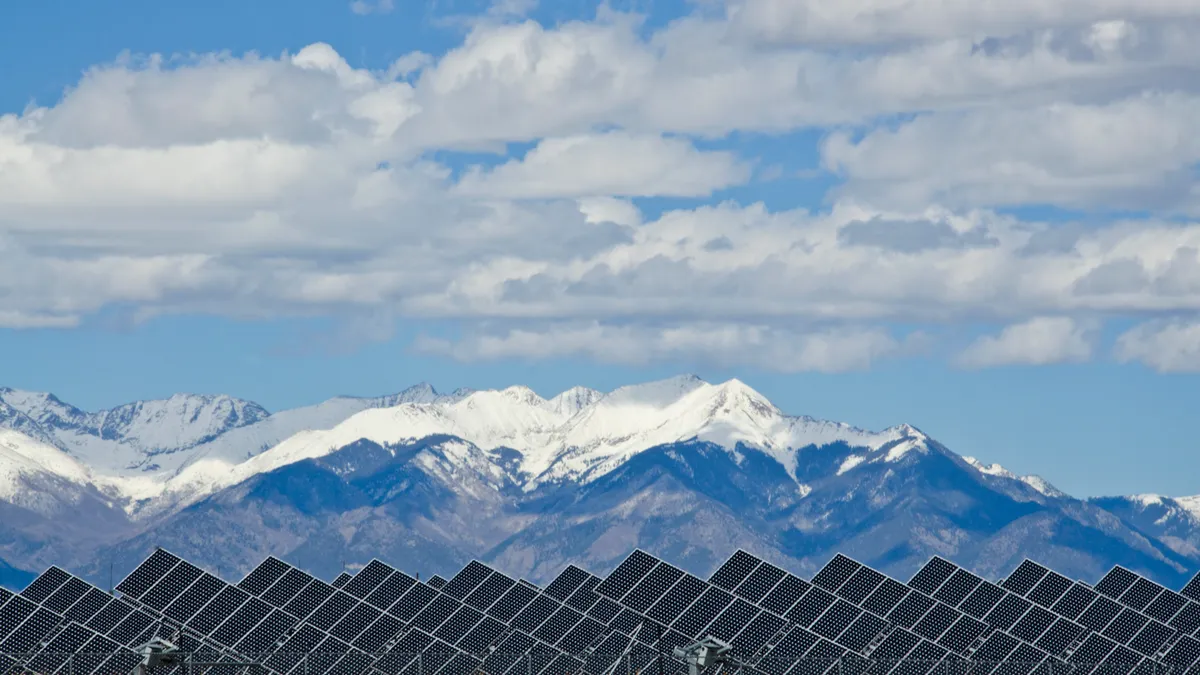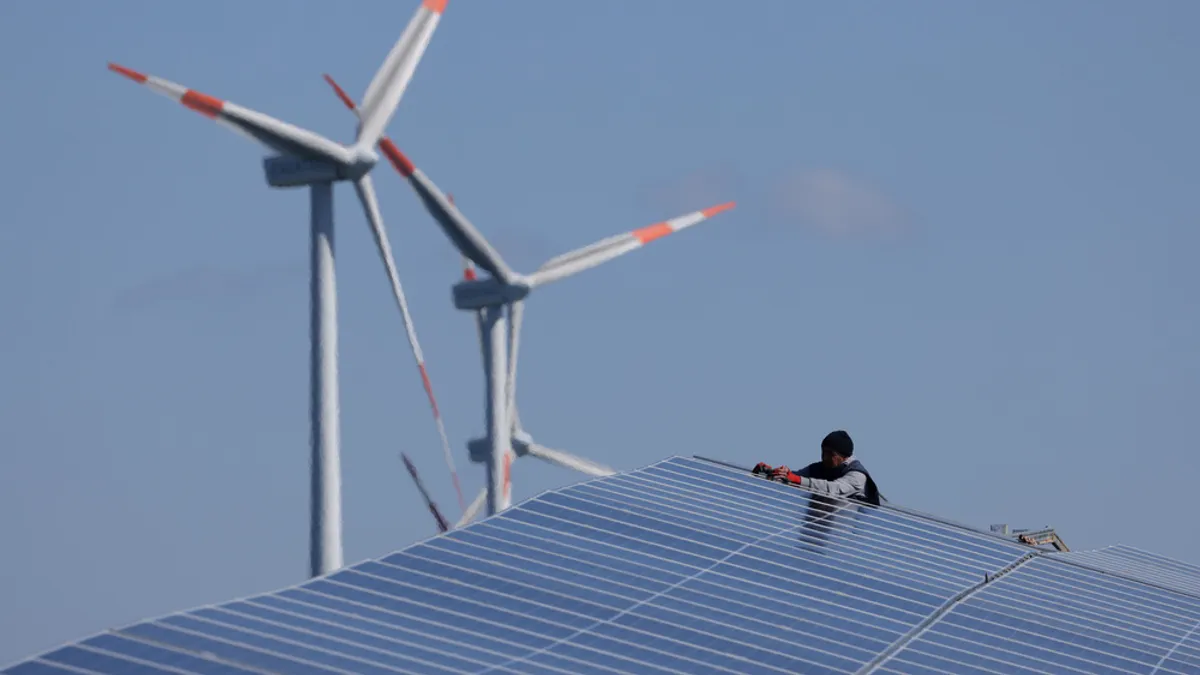Editor's Note: The following is a guest post from Lon Huber, director of the government and utility practice at Strategen Consulting and former staffer at the Arizona Residential Utility Consumer Office. The piece is a response to an earlier guest post by James Tong and Jon Wellinghoff, available here. The views in this post represent those of Huber, not Strategen Consulting.
Clarification: A previous version of this article contained several potential mischaracterizations regarding James Tong and Jon Wellinghoff's arguments on utilities rate basing behind-the-meter DER investments.
- The article referred to Wellinghoff and Tong's argument that utility solar investments are inconsistent with prudent investment standards. However, Wellinghoff and Tong argue that rate-basing behind-the-meter distributed energy resource investments, not all utility solar investments, is inconsistent with such standards.
- The article also referred to Wellinghoff and Tong's argument that "any form of involvement, real of perceived, could cut off the private DER marketplace." Wellinghoff and Tong argue that any competitive form of involvement by monopolies could cut off the private DER marketplace.
- The article also referred to Wellinghoff and Tong's argument that utilities should never learn by doing behind-the-meter DER investments, even if there are underserved market segments screaming for solar. However, Wellinghoff and Tong do not directly address the utility's role in serving underserved markets in their piece.
- The article also referred to Wellinghoff and Tong's argument that "any expenditure that needs to be recovered from ratepayers, outside of certain DER related grid related investments, is not a rational strategy." Wellinghoff and Tong argue that any behind-the-meter DER investments that need to be recovered from ratepayers are not a good strategy for utilities.
Utilities play a foundational role in providing affordable and reliable electric service to Americans. If distributed energy resources (DERs) are here to stay, and blossom, then utilities have to be a part of the enabling toolkit. But just what role they end up playing will be highly dependent on local market conditions and policy goals. Unconditional opposition to sensible and justifiable market participation by utilities is not constructive, and can actually block ratepayers from realizing benefits that could come from utility involvement.
This opposition to utility ownership of distributed energy resources seems to be the gut reaction in many segments of the industry at the moment; recent examples include a passionate debate I participated in at the Greentech Media Solar Summit and the James Tong and Jon Wellinghoff Utility Dive article entitled, "Should utilities be allowed to rate base solar?" That article, in particular, makes valid points about the unique competitive advantages and business strategies of both utilities and unregulated competitors, but the authors’ arguments are not universal truths. What ends up being overlooked in dogmatic approaches are the key benefits of sensible utility involvement. There is also a tendency to overhype potential problems that, once examined, turn out to be non-issues.
The following “claim vs. reality” analysis attempts to break down a few concepts to clear the way for a more substantive and balanced discussion of the role of utilities in DER ownership.
Claim: Utility rate-basing of behind-the-meter DER investments is inconsistent with “prudent investment standards.”
Reality: Given that over half the States have renewable portfolio standards and that the EPA’s proposed Clean Power Plan assumes that renewable generation will replace a significant amount of fossil-fuel generation, it is safe to say that utility solar investments can certainly be prudent. It is also important to note that the recently implemented utility rooftop solar programs in Arizona are on the utility’s side of the meter and focus on western-facing systems, serving all customers at a time when the grid benefits the most from this energy. There were also research and development objectives layered in the programs. Moreover, just because there have been claims that rooftop distributed generation (DG) is not as cost effective as wholesale DG with trackers, that does not mean it cannot provide a net benefit to ratepayers. It would be similar to an Energy Efficiency measure with a 1.2 benefit-cost ratio (BCR) from the societal cost test, and another with a 2.2. Planners may prioritize deployment of the resource with the 2.2 BCR. However, the program with a BCR of 1.2 still shows benefits that are greater than costs and should be deployed.
Claim: Utilities, which are granted “exclusive franchises” to sell power, will conflict with antitrust laws by exercising their franchise right to install solar systems on customer premises. Any competitive form of involvement by monopolies, whether real or perceived, could cut off the private DER marketplace.
Reality: Antitrust laws give States the clear authority to grant exclusive franchises to utilities subject to active regulatory supervision. Under these laws, utilities have the ability to seek permission from regulators to sell renewable power to customers. So as customers seek more options and control over their energy consumption, it is proper for utilities to provide them with more options under regulatory supervision. In addition, there is no clear evidence that utility involvement will universally stifle the private marketplace. Take a look at the private installation numbers in Arizona Public Service (APS) service territory after their rooftop solar program started. In many states, utility owned generation co-exists with IPPs. If anything, utilities need the private sector to partner with and actually do the installation, maintenance, and operations, which brings us to the next point.
Claim: Utilities lack expertise in DER and are not the least-cost providers.
Reality: While there are examples of utilities poorly executing DER strategies, utilities have also provided examples of industry best practices. In Arizona, both Tucson Electric Power (TEP) and APS carry out highly competitive solicitations for third party installers to execute their programs. In Tucson, installers can offer the “utility option” alongside lease and direct purchase options when selling to prospective customers. This competitive procurement carries over to lower system costs. And while the focus on system cost is important, it not as important as opponents to utility owned DG claim it to be when the levelized cost of energy (LCOE) of solar is less than the retail rate. As more and more markets hit “grid parity,” the leading states see this gap widening. Under net metering, there is no competition to deliver solar at a lower cost to ratepayers; however, utilities under cost-based regulation are in a position to deliver rooftop solar below the net metered rate. No matter how cheap a third party provider can install a system, non-solar ratepayers will not see the incremental benefit if compensation is fixed at the current retail rate.
Claim: Utilities need to be enablers and experts in a “transactive” style DER marketplace without ever learning by doing.
Reality: Direct utility participation, if done right, can accelerate the development of the type of vibrant DER marketplace many seek, especially when rules are in place to ensure a level playing field for third party participants. Through involvement, utilities can learn how to better integrate DER; they can also gain perspective on some of the challenges developers face. They can test new technologies, offer creative services and provide additional values without the need for additional compensation. Smart utility ownership would speed up the understanding and connectivity of the distribution system. Utility involvement can help consumers who might not have otherwise been able to obtain DERs and share in its benefits. Making strategic investments in DER assets will not throw a utility into a different risk profile for investors. To the contrary, not learning by doing and developing in house expertise in DER and advanced grid technologies will make a utility look more risky to investors.
Claim: Any expenditure on behind-the-meter DER investments that needs to be recovered from ratepayers, outside of certain DER related grid related investments, is not a rational strategy.
Reality: While utilities need to be more judicious than ever around large fossil assets with concentrated ratepayer risk, small DER investments are a comparatively safe bet. In the end, rate-basing solar is similar to any multi-year obligation. Should regulatory commissions tell utilities that it is not a good business strategy to acquire large scale renewable assets because it bogs down all ratepayers with commitments that need to be paid? What if those utility scale renewable assets are half the price with more value than a comparable DER asset after adjusting for transmission and losses?
To conclude, there are real issues to be debated around utility owned rooftop solar. Utility ownership may not make sense in all jurisdictions, and if there is utility involvement, it may be differ significantly from region to region. How utilities interact in the DER market needs to be carefully worked out by stakeholders and policymakers based on the unique market design and policy priorities within each jurisdiction.
However, a dogmatic determination that utility rate based rooftop solar should be avoided across the United States, no matter the situation or customer segment, over simplifies the issues and introduces room for false arguments. Pragmatically exploring different ways to offer consumers more options and pathways to get rooftop solar should be a given, not a debate. Hopefully, discussions like this one get us closer to answering the real questions that rate based DER presents - like how to encourage a fairer and more accessible rooftop solar market for the benefit of all consumers.






















